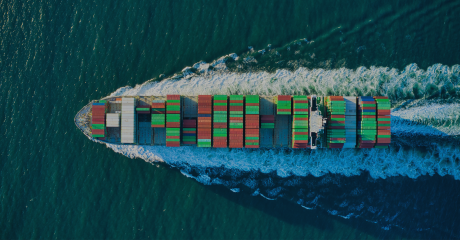What are export controls?
Export controls are government policies that protect national security interests and promote foreign policy objectives. These regulations restrict the export of goods, software, and technology that could be used against the interests of the exporting country.
In the U.S., federal export controls are enforced primarily through:
- The Export Administration Regulations (EAR) issued by the Department of Commerce.
- The International Traffic in Arms Regulations (ITAR) issued by the Department of State.
- Economic and trade sanctions administered by the Treasury Department’s Office of Foreign Assets Control (OFAC).
What is export compliance?
At its most basic, export compliance is an aspect of corporate compliance that includes the rules, regulations, and best practices of exporting to particular countries. It’s important that every part of your organization—including sales, accounting, shipping, purchasing, and legal—is aware of their trade compliance responsibilities. Companies that export internationally often need to comply with a complex regulatory framework imposed by multiple governing bodies within even the same country.
For exporters, staying compliant typically involves:
- Determining which government agency has jurisdiction over your products.
- Identifying restrictions on exporting to certain countries (for example, embargoes, sanctions, or license requirements).
- Cross-checking lists of denied parties to prevent exports to banned individuals and organizations.
- Preparing the appropriate export documents.
Why are export controls important?
International trade compliance policies, including export controls, are essential because countries have the right to protect critical products, technology, or information from falling into the wrong hands or simply to safeguard competitive advantages in a global marketplace.
Failing to understand these regulations has serious consequences. Unfortunately, regulations are often not harmonized across trading countries, and the rules change rapidly.
According to the Bureau of Industry and Security (BIS), fines for export violations can reach:
- Up to $1 million per violation in criminal cases.
- Up to $300,000 (or twice the transaction value) in administrative cases.
What is the latest in export legislation?
Export control lists are in a constant state of flux, so compliance teams must use up-to-date information.
Key recent developments include:
- Semiconductors and China: In October 2022, the BIS updated controls on shipping advanced computing and semiconductor manufacturing items to China. This followed the CHIPS and Science Act, which prohibits funding recipients from expanding in countries that pose a national security threat. Heightened license requirements are now in place for certain advanced chips and and manufacturing equipment.
>> Learn more about the latest export controls on Chinese Semiconductors <<
- Russian Sanctions: Following the invasion of Ukraine, BIS imposed stringent controls. Since April 2022, all items on the Commerce Control List (CCL) require export licenses when destined for Russia or Belarus. These new license requirements also apply to in-country transfers within Russia and Belarus.
>> Learn tips for complying with the ever-growing list of Russian sanctions <<
How can I run efficient export investigations?
It is impossible to remain in compliance with export control lists if you lack information on the associated importers, exporters, and buyers.
Sayari Graph is a commercial risk intelligence platform that leverages global public records and graph technology to map complex, cross-border corporate networks. This comprehensive view provides importers with broader context surrounding their partners and counterparties. If you’re looking to stay in lock step with regulators, BIS also relies on Sayari Graph data for regulating trade.
U.S. regulators have emphasized the risks of doing business with Chinese military-industrial complex companies and state owned enterprises (SOEs). While there is an explicit list of Chinese military end users (MEUs) to avoid, this list is non-exhaustive. The burden to ensure customers are not military end users falls on the exporter.
>> Learn our four strategies for identifying Chinese military companies <<
Sayari Graph helps enrich regulatory lists (like BIS MEU, NS-CMIC, and Section 1260H) with complete subsidiaries, joint ventures, branches, trade partners, and affiliates. This allows exporters to quickly uncover hidden trade counterparty connections, including transshipment risk and geographic proximity to designated entities. Additionally in Graph, users can upload counterparty lists for efficient bulk screening for entities located in a military innovation zone.
Watch one of our in-house analysts perform an example investigation to learn how to identify potential Chinese military end users or request a personalized demo of Sayari Graph.



